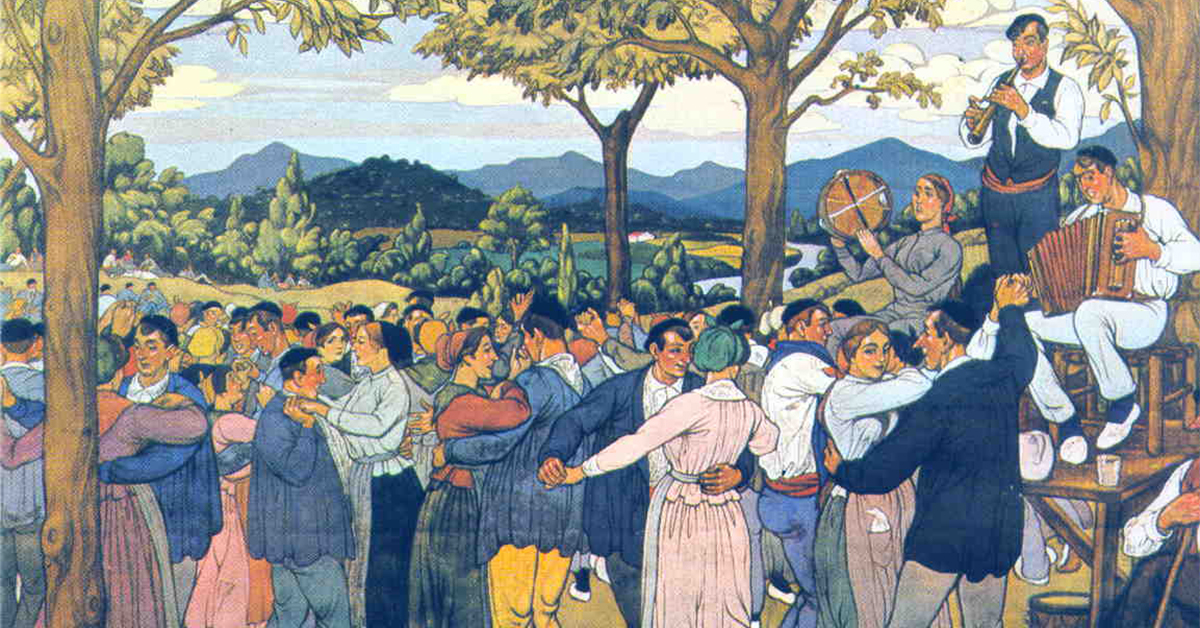Archives
In Biscay we have many hermitages, and in almost all of them celebrations are held on the day or time of their saint. In addition to religious rites, various activities are currently organized an enjoyed during the festival as community celebrations, such as popular meals, dances or games. Among these activities, competitions are very common, usually related to sport or gastronomy. But there some uncommon championships as well, an example of this is the txosna contest that is organized in the Berbikez field, in Gordexola, during the festivities of the hermitage of Saint Cosmas and Saint Damian. It must be said that, despite the fact that the dedication of this hermitage of Gordexola is San Juan Bautista, its festivity is celebrated on September 26, the day of the martyrs of Saint Cosmas and Saint Damian, and that is why many also know it by that name.
There are two appropriate dates in the calendar for miraculous solutions: the solstices of the year.
On this occasion we shall refer to the summer solstice, or what is the same, the night before St. John’s Day, associated to having great potential for extraordinary solutions which exceeded all natural logic and order.
One of the usual rites of that night aimed at curing herniated children. They were kids whose guts were partially eviscerated by a tear of the peritoneal membrane. They usually had a lump in the lower abdomen, often in the groin, where the thigh joins the lower belly. This injury could bring very serious consequences, including the possibility of death.
The annual festive cycle is known to comprise solar celebrations of fixed date and festivities of variable character (ruled by the full moon of Easter Sunday). We might likewise distinguish between major feasts (St John, Corpus Christi, patron saints’ days…), or commemorations of generic origin and great importance in the diverse Christian liturgies, and minor feasts, punctual observances, or popular local devotions (saints’ days, Marian apparitions, miracles, rogations…), observed in neighbourhoods, parishes and peripheral places of worship.
In this context, traditional patron saint festivities concentrate in the summer season (symbol of a time of prosperity and abundance), rather than throughout the year, beginning with the feast of St John (24 June) and ending immediately after St Michael’s festival (29 September). The social structuring of the community and its organized interactions being reflected in them all, they are usually governed by a common and fairly deep-rooted scheme which we shall now try to unravel.

The flag of Oyón flies over Cachi, 2017. José Ángel Chasco.
On 22 January the city of Oyón (Rioja Alavesa) celebrates its patronal festival in honour of Saint Vincent and Saint Anastasius. The five main events of this major winter celebration are: Cachi’s rolling, the burning of the bonfire, the singing at dawn, the dance dedicated to the patrons, and the firework display during the procession. (more…)







